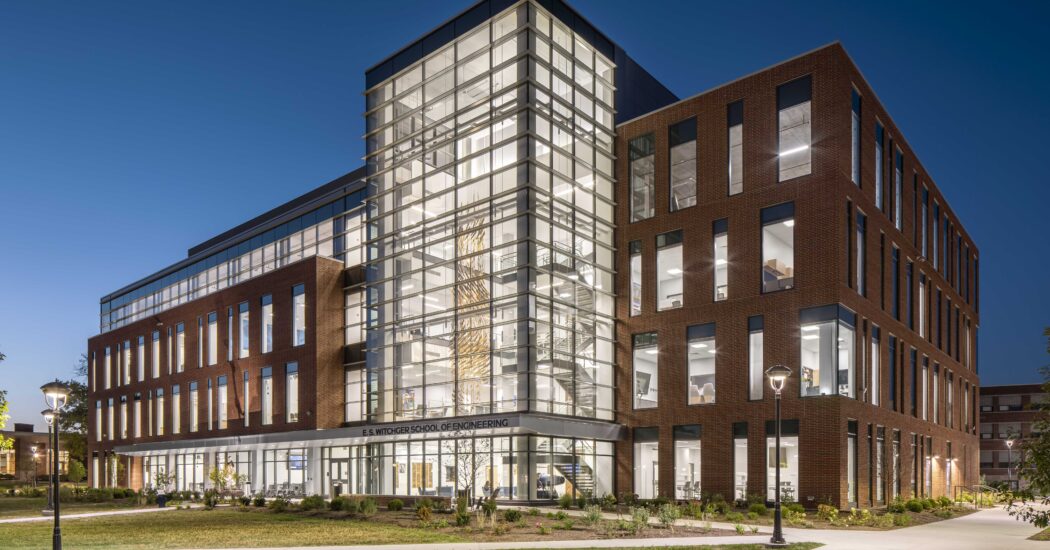College Attendance. Don’t Drop Out. Do Tune In!
-
Category
Studio-Higher Ed -
Posted By
Sarah Hempstead -
Posted On
Oct 21, 2016
40 years ago that forerunner of virtual learning, the correspondence course, was mostly the preserve of those either struggling to gain acceptance to college, unable to attend for financial reasons, or looking to gain very precise professional qualifications while working fulltime. Today, the choices and access points for remote education are growing exponentially. The social “acceptability” of those choices is less of an issue than the practical career advantages they bestow. And the extraordinary face value for money offered is more and more attractive to financially hard-pressed students.
So how can the campus built environment actively contribute to motivating prospective students to turn up, as opposed to simply turning on their computer and staying at home to study? It’s a valid question and one that farsighted strategists within higher education have been asking themselves for some time now. And while it is true that so far there has been no total abandonment of the campus for the coffee shop and the laptop, the idea of remote learning is no longer remote from the experience of America’s student population.
One research report, a collaboration between the Center for Digital Education and Converge, suggests that if current trends continue, by 2018 there will be more fulltime online post-secondary students than students who take all their classes in a physical location. So-called MOOCS, Massive Open Online Courses, are hugely attractive, in principle at least, to students hesitating at the likelihood of substantial debt incurred as a result of choosing a college education. The rising tide of technology and communications-led change that has transformed so many other workplaces beyond recognition has now lapped up against the foundations of traditionally administered higher education.
However, at Schmidt Associates, we do not view the role of architects, designers, and built environment technologists as being to assist higher education leaders in a resistance to the tide of change. Rather, our ideal function is to help lend three-dimensional appeal to the prospect of a campus based education in an increasingly “disintermediated” world. That’s the high vision. What can we do in practice?
The first important recognition is that there do not need to be dogmatic distinctions made, and irreversible positions adopted, in some notional pitched battle between “real” and “virtual” styles of education. A far more likely, and desirable outcome is the notion of “blended” education styles. In the blended approach, the campus does what it does best: providing a home and focus for human interaction, face-to-face. Meanwhile, virtual learning opens up channels to a range of resources that no physical building, or even an entire city, could ever hope to hold.
This blended approach is already gaining traction with courses of study that at one time were only considered valid, “respectable” even, when students attended every day, all day, in person, and in classrooms that would have been familiar to their predecessors 150 years ago. (In one University Dental School, applications have gone up by more than seven percent since the Faculty started loading lectures online shortly after they are given. Students value the flexibility and increased knowledge access offered by this blend of live learning and online resource.)
Those of us whose profession it is to think about how the campus built environment can best respond to these changes have to do some practical thinking. Spaces will need to change, sometimes radically, in the face of evolving demands made upon them.
The library is an excellent example. Blended learning will inevitably increase the proportion of student time spent on highly personalized study courses. Course resources will much more likely be located online than along lines of textbooks. One of our roles as designers will be to reinterpret the library space.
Where do the real books go in an eBook world? How will we physically accommodate new styles of collaborative, small group learning without disturbing the hallowed “hush” of a place of study? What kind of technology infrastructure will we need to install to accommodate permanent, exponential growth in demand for speed and variety of information access? What will make the library of the future a worthwhile destination for students? And how will we create it without damaging or discarding the dignities of the past?
Another challenge is the lecture theatre. As the old model of one presenter on “transmit” to a large room full of students on “receive” gives way to distributed information and anytime access, what do we do with the space where people used to sit and listen? How do we adapt it so that, for example, they can arrive having already accessed the lecture on their preferred remote device and then use the physical space, and the presence of their peers, to do the real work of discussion and debate of the material?
In reality, the cycle of reinterpretation and repurposing of campus space has only just begun. The challenges will continue. And they will grow. Yet so too will the opportunities. We believe that the ideal of “university” – in the sense of a collection of human minds and personalities that encompasses the diversity needed to engage with our great issues – can only grow in value over the next forty years. As designers, our task is to create the best spaces possible for that growth.






